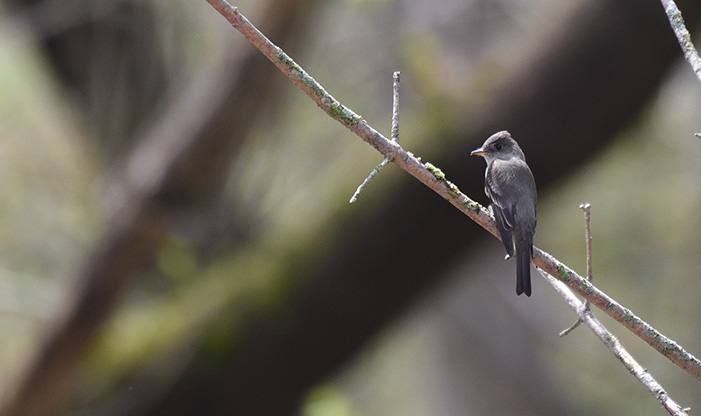Summertime brings warmth and light to the trails, along with a special time for birding. The flurry of spring migration has ended, and birds have settled on their breeding grounds to raise their young. A bounty of hatching insects becomes a major food source for many bird species.
Birds of the West Meadows Loop
To discover the birds of the season, look within the habitats seen from the rustic trails of the West Meadows Loop. The entrance to the loop feels like a corridor lined with trees on both sides, providing a welcoming expanse of shade. Walk quietly, letting your senses acclimate to the intermittent fluttering of wings as songbirds move from tree to tree. Listen for the subtle contact calls of birds communicating with each other.
Birds Near the Prairie
While approaching the prairie, be aware of birds active at the forest edge. Look for young bluebirds as their parents teach them how to forage. After hearing the distinctive pee-a-wee call of the Eastern Wood-Pewee, be on the lookout for their flycatching behavior. They are known for perching on a dead branch and flying off to catch an insect in midair.
The expansive and more solitary prairie trails bring the land and sky together, mingling blooming wildflowers with a warm summer breeze. On sunny days, look overhead for Turkey Vultures soaring on thermals. The rising warm air helps them conserve energy in flight. Lower in the air over the prairie, watch for American Kestrels hovering over the landscape as they scan for prey. Large insects like dragonflies and grasshoppers are a favorite summer food.
Birds Near the Trees
As the trail meanders through stands of trees and shrubs, birds take shelter in the surrounding foliage. Gray Catbirds often call from these areas, projecting a catlike mew that gives them their name. Energetic House Wrens also frequent these habitats and have a fondness for wood piles. Blue Jays seem to appear suddenly, calling to each other, and disappear just as quickly, on to the next location. Another corvid, the American Crow, flies over the trees. When you see one crow, there are likely others nearby. These sociable birds work together, like when they mob a predator to drive it away.
Birds Near the Loop’s Ponds
Birds always need access to water, which can be especially vital in summer. When the trail leads you near a pond, take slow quiet steps to avoid disturbing the birds and other wildlife. You may be rewarded with the view of a Great Blue Heron standing near the edge of Wood Duck Pond. While you’re there, don’t forget to look for Wood Ducks!
Enjoy the Center’s extended summer hours to witness bird behavior in the evening. Many birds become active before dusk, feeding one last time before roosting. Common Nighthawks may be seen hunting insects overhead at this time of day. Watch for the white patch on the underside of their long, pointed wings. As twilight sets in, Eastern Screech Owls get ready to hunt. Hearing their trills on a warm summer night is sure to delight any birder.


